Hovenweep and Canyons of the Ancients: A Visitor’s Guide
Table of Contents

Years ago, at Sand Island, Utah, a ranger came by to check our river permits. It was my first ever river trip, and I was guiding a 3 day excursion down the San Jaun River, in Southern Utah. He gave us his canned spiel, one given a thousand times before.
We were told about rules and regulations, guide licenses, wildlife, and pretty much everything else that is typical of a Southwestern river trip. One thing he mentioned that stuck with me was that the San Jaun river is “the greatest outdoor museum in the world.”
Along the river’s banks were sandstone cliffs adorned by huge petroglyph panels, and ancient cliff dwellings overlooked the river from hanging alcoves. People lived here long before anyone else, and the river was their life blood.
Ever since, my fascination with the Native American Cultures and artifacts of the desert Southwest has grown into a near obsession. Of particular interest is the architecture, art, and remains of the Ancestral Puebloan cultures (some may know them better as the Anasazi).
I have visited many sites throughout Arizona, Utah, and Colorado that display the rich history of this ancient culture. In October of 2018, I had the chance to visit both Hovenweep National Monument, and the adjacent Canyons of the Ancients National Monument.
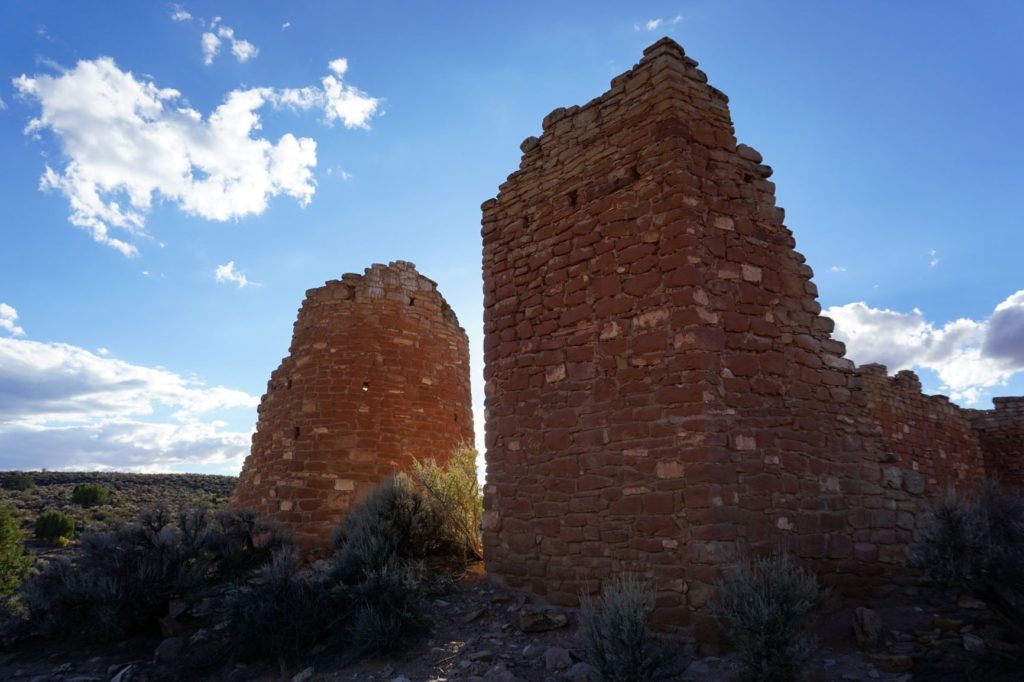
A visit here has been on my travel to-do list for years. I knew of Hovenweep for it’s impressive stone towers, and Canyons of the Ancients is famed for the mind boggling amount of archeological richness just under foot. They are places that yield a bounty of archeological knowledge and cultural insights. The artifacts here are ones that have enticed my imagination.
Archaeology is a minor passion of mine, and I am hoping that I can share some of that passion with you. Through my experience visiting Hovenweep, I bring to you a guide to visiting Hovenweep and Canyons of the Ancients National Monument.
What is Hovenweep National Monument?
Hovenweep National Monument is an Ancestral Puebloan Archeological site straddling the Utah-Colorado state line. Like nearby archaeological sites, Hovenweep contains the remains of several villages, most of which are perched on and below canyon walls.
In a region known as the Great Sage Plain, the topography is a plateau cut by finger like canyons, used to its full advantage by it’s ancient residents.
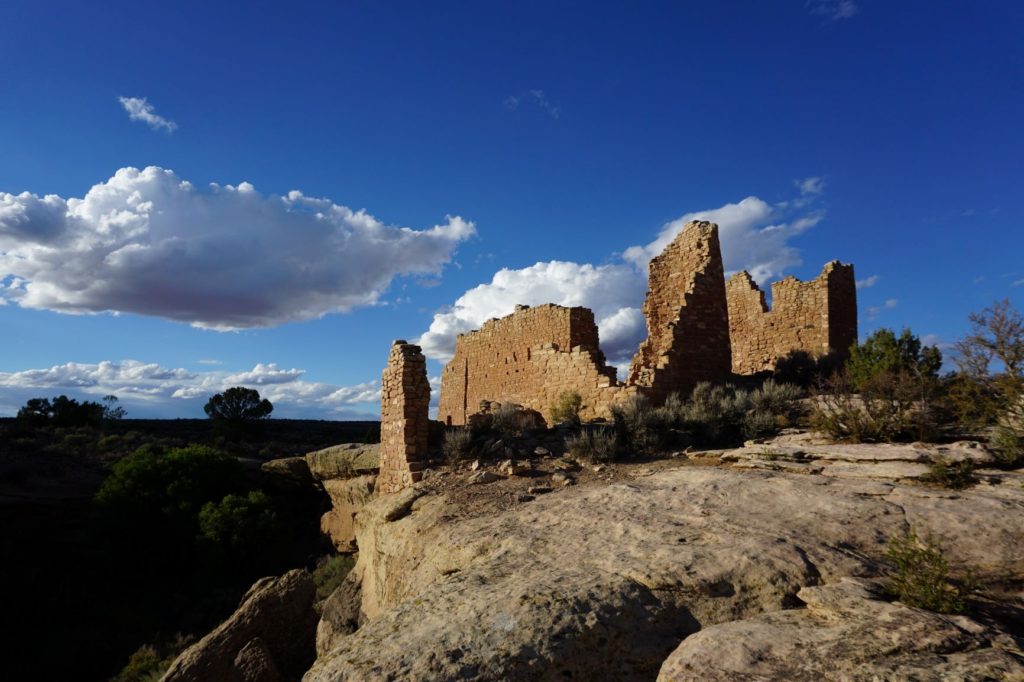
Built between the years 1200-1300 AD, the villages of Hovenweep once housed nearly 3,000 people. Along with numerous multi-story Towers, Pueblos, and Kivas, visitors can find the remains of check dams and granaries, as well as numerous petroglyphs.
Evidence of an ancient culture is plainly abundant. Interestingly, modern restoration of the Hovenweep structures has been minimal. Unlike nearby Mesa Verde, where most of the structures have been rebuilt, the buildings at Hovenweep have received only supportive reinforcement.
Just enough restoration has been performed to keep the structures from falling down, but not enough so that little of the original structures remain. It seems that the craftsmanship displayed at Hovenweep was of such quality to keep the structures intact for hundreds of years.
Hovenweep is unique in many ways. Buildings constructed here took advantage of the terrain of the canyon walls, and structures were put in place to maximize access to natural resources. Soft, rolling hills were developed into terraced farms, while overhangs in cliffs were turned into store houses and homes. Remains of check dams suggested that floods were controlled and harnessed for water and agriculture.
You can’t help but marvel at the ambition and creativity of these builders. There are buildings perched on boulders, and underground passages leading into Kivas. The Square Tower Group is so named for a three story tower perched upon a free-standing boulder. Evidence suggests that these buildings were designed for defense, with their subterranean passages allowing safe travel between structures.
Canyons of the Ancients National Monument
Like Arches and Canyonlands, Kings Canyon and Sequoia, or those combination fast food restaurants (my favorite combo is a Chipotle-Panda Express), Canyons of the Ancients National Monument is the Peanut Butter to Hovenweep’s Chocolate.
The two monuments overlap, with a few portions of Hovenweep forming enclaves within Canyons of the Ancients. Both of these National Monuments protect and preserve thousands of Ancestral Puebloan artifacts.
In contrast to Hovenweep, with its visitor center, paved trails, and established campground, Canyons of the Ancients is a little less developed. It’s very much a “choose your own adventure” kind of deal. There are fewer established amenities to help guide visitors. Instead, one is left to the devices of maps and road signs to guide them to excavated pueblos.
The land here is administered by the Bureau of Land Management, rather than the NPS. A museum and visitors center can be found at the Anasazi Heritage Center in Dolores. Plenty of information can be found here, along with a few Turn-of-the-Millenium neon plastic iMacs. Retro!
The heritage center also features a short trail leading to the Escalante Pueblo. This excavation site allows for views of the greater four corners region, along with a close up look at the architecture of a multi-room structure. From the 360 degree viewshed, you can see Mesa Verde, the San Juan Mountains, Shiprock, Sleeping Ute Mountain, and Bear Ears National Monument.
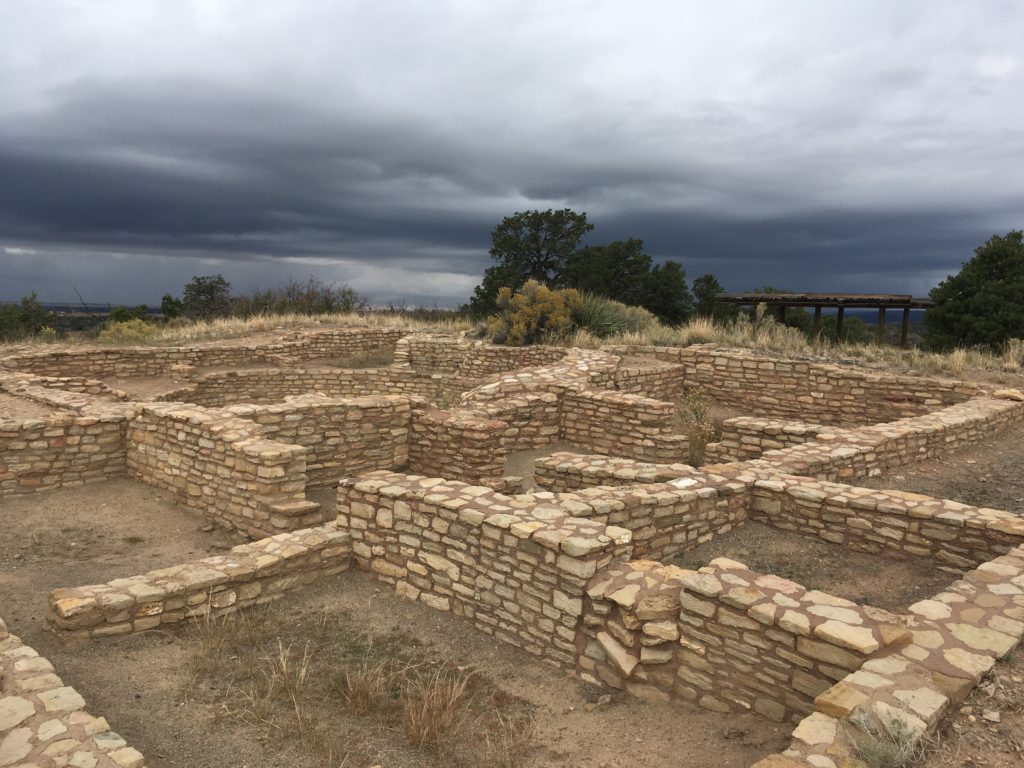
If you really want to find it, Canyons will bring you all the Ancestral Puebloan archaeological goodness you can ask for. One of the largest and most impressive sites at Canyons of the Ancients is the Lowry Pueblo. Excavated here are the remains of the largest Great House of the Chacoan Period.
A giant Kiva marks the site. It can easily be reached from Hovenweep, Cortez, or from any point in the national monument. Lowry is just one of many sites found in this region. Some can be visited by car, while others may require some hiking. Most are kept hidden from the public to discourage vandalism and looting.
The Ancestral Puebloans
It was nearly 1000 years ago when Hovenweep and it’s surrounding environs were first settled by Native Americans. Known as the Ancestral Puebloans, this group of people traveled throughout the Southwest for centuries, leaving behind multi-story stone structures, rock art, and many artifacts.
They were farmers, traders, masons, and potters. They lived in both modest settlements, grand civil centers, and isolated homesteads.
The Ancestral Puebloans arranged themselves into tight knit family units, organized at the Clan level. Religion played a strong role, as evidenced by the many Kivas found throughout the Southwest. Kivas are large rooms used for ceremonial purposes. They are still in use today by the Hopi, and other native groups.
Like most Ancestral Puebloan sites, Hovenweep eventually found itself abandoned. Speculation abounds, but the best guess of archaeologist and researchers suggests that people left due to a combination of drought, warfare, and climate change.
According to them, people were forced to leave over a lack of resources, and competition from other groups. From here, people retreated further into Utah, forming small, scattered settlements in the canyons of Cedar Mesa.
If you ask any modern Puebloan Groups-the descendants of these ancient villages, they will tell you that Hovenweep was abandoned not out of strife. Instead, people left because it was simply their time. They were on a migration to find a permanent place to call home, and their time at Hovenweep had come to an end. Themes of migration are common in Puebloan lore and story telling.
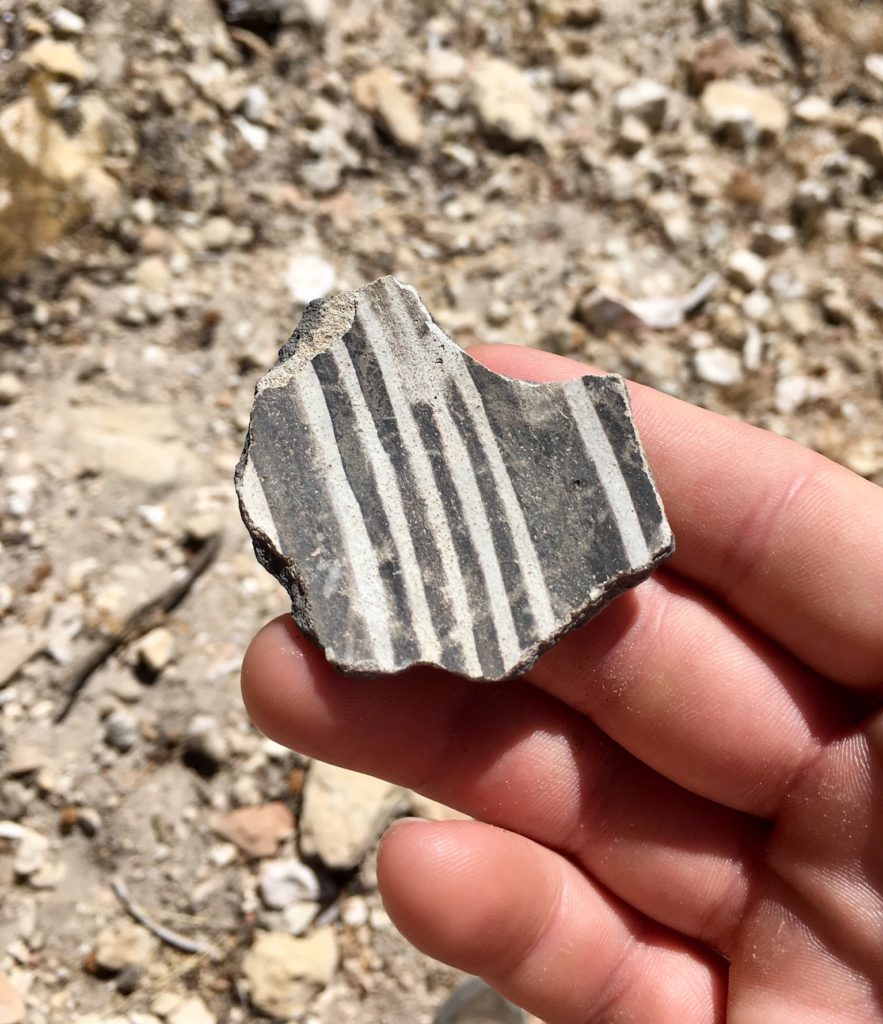
For decades, Southwest literature, travel brochures, and tourists traps loved to advertise the “mysterious disappearance of the Anasazi.” After all, why were these impressive settlements abandoned after such a short time? I think that it was a romantic notion that was used to bring in tourism.
Archaeological evidence suggests that many settlements were ritually abandoned, while the residents of others were forced out. The Puebloan Peoples, be that the Hopi, Zuni, or others, maintain that their ancestors were simply following patterns of migration on their great journey.
It is more likely that the truth lies somewhere in the middle. In my opinion, both the scientific evidence, and the Puebloan oral traditions support each other.
Camping and Lodging
Whether you are camping, or staying at a hotel, there are many options available. The nearby communities of Dolores and Cortez offer many hotels or rentals. Camping, both paid and unpaid, is also abundant.
Camping at Hovenweep and Canyons of the Ancients
If you are looking to go camping during your visit, there is no shortage of options both in and around Hovenweep, and Canyons of the Ancients. Hovenweep hosts a paid campsite, complete with bathrooms, fire rings, and covered picnic benches.
The campgound is first come first serve, and camping costs $15 per night. During our visit in early October, the campground was busy, though vacant spots could still be found.
Looking to save money, we skipped Hovenweep’s campground. Instead, we opted for the free, primitive camping on nearby public land. A short drive just over the Colorado-Utah state line will land you in Canyons of the Ancients, where free camping abounds. Keep in mind that when doing dispersed camping, there are rarely any toilets or facilities within easy access.
All food and water must be packed in, and all human waste must either be packed out, or buried according to best LNT practices. Remember to always camp on durable surfaces, and to not leave a mess. For more information on how to camp with minimal impact on the environment, you can read up on the 7 LNT Principles. In essence, strive to leave an area better than you found it.
Hotels, Air BnB, and Hostels Near Hovenweep
Would you rather forego camping in favor of four walls and a continental breakfast? If so, there are plenty of hotels, hostels, and AirBnB options available in nearby Cortez, or many of the other communities in the four corners regions.
Blanding, Durango, and Kayenta are nearby communities that all have plenty of sightseeing opportunities of their own. Check out the AirBnB website for more information, or check out TripAdvisor’s list of the Best Hotels near the Four Corners.
Directions to Hovenweep, and Canyons of the Ancients
Both of these monuments are located in a remote part of what is already a remote region. Most sites are a half hour drive from the nearest highway, and many can only be accessed via dirt roads, followed by a short hike. That being said, named Pueblos are easily found on maps, and the roads that cross Canyons of the Ancients are well maintained.
I will list the directions from Cortez, CO, and Four Corners. For further directions, consult google maps, or the friendly staff at the Anasazi Cultural Center.
From Cortez:
To reach Hovenweep from Cortez, Colorado, take US 491 North for 19 miles to Road BB in Pleasant View, CO. Turn Left onto Road BB, and take it for 6 miles until you make a left onto CO County Road 10. County Road 10 turns into Hovenweep Road upon crossing the Utah state line.
Soon after, turn left onto 268A to reach the Hovenweep Visitor Centers. Other Hovenweep sites are found along Hovenweep Rd./ CO County Road 10. As always, google maps is your Ally here.
From Four Corners:
To reach Hovenweep/ Canyons of the Ancients from Four Corners Tribal Park, head north on HWY 160, and turn left onto CO Hwy 41. Follow Hwy 41 to Aneth, Utah. In Aneth, turn right onto Ismay Trading Post Road. Turn Left onto Belitso Road. After 4.5 miles, turn Right onto Reservation Road. Follow Reservation Road for 5 miles, and merge right onto Hovenweep Road. Turn right onto CR 268A, and follow for a few minutes before arriving at the Visitors Center.
Other Hovenweep sites can be reached by taking Hovenweep Road past the visitors center turn off.
Nearby Attractions
Hovenweep’s convenient location near the Four Corners puts it in within easy driving distance of many other Southwest Attractions. Listed below are some of my favorites.
Mesa Verde National Park
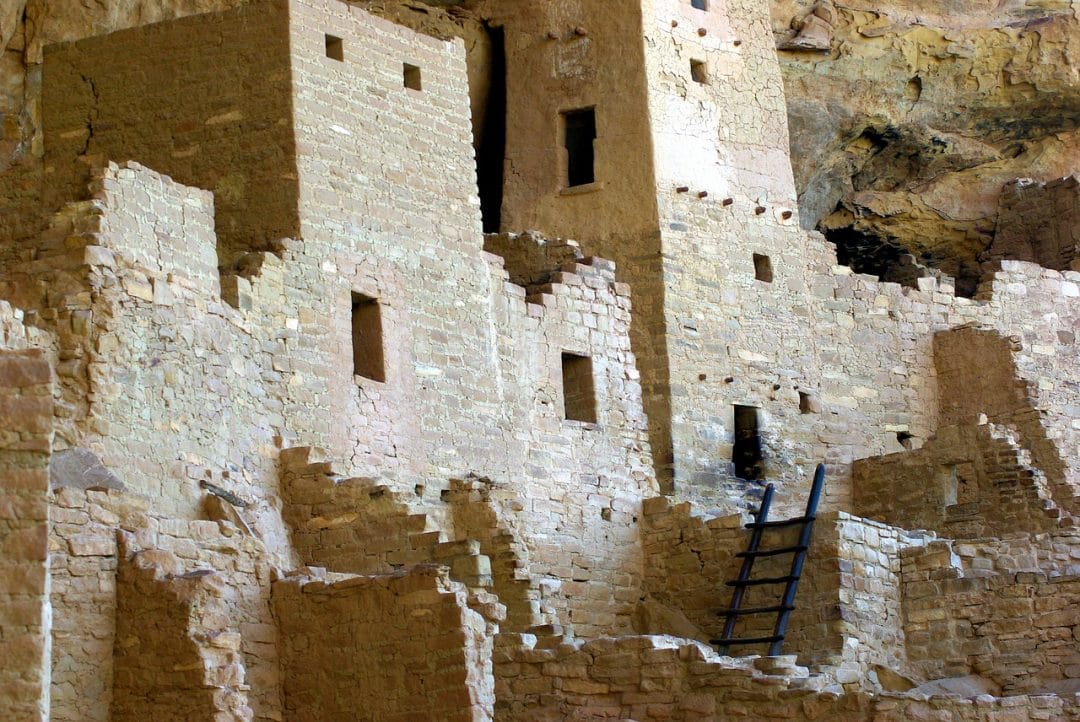
No visit to Hovenweep and Canyons of the Ancients would be complete without a trip to Mesa Verde. Mesa Verde serves as a sort of companion to Hovenweep/CotA. Looking west from Hovenweep, the jagged outline of Mesa Verde is an unmistakable landmark on the Horizon. Nestled just beyond are the impressive, cliffside villages of Mesa Verde.
Within this National Park are thousands of Ancestral Puebloan Archaeological sites, tucked away in sandstone canyons. There is plenty of evidence to suggest that the residents of Hovenweep interacted with the people who inhabited Mesa Verde. If Mesa Verde was the metropolitan center, than Hovenweep and Canyons of the Ancients comprised it’s suburbs.
Mesa Verde is just a short drive away. Really, it can’t be any longer than 1.5 hours. Since you’re in the neighborhood, why not check it out?
Monument Valley
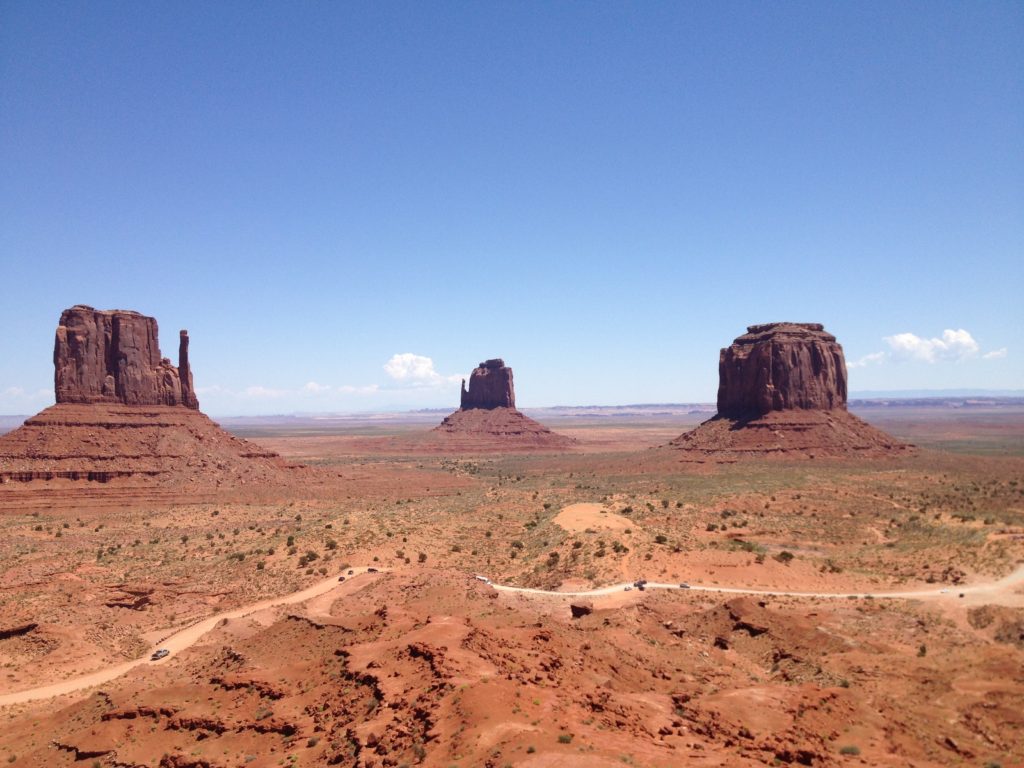
Few things can be said about Monument Valley that has not already. Thanks to Hollywood Westerns, Magazines, and a slew of Instagram photos, Monument Valley Tribal Park has come to be the iconic image of the American Southwest. It is visited by hundreds of thousands, if not millions of tourists each year.
People flock from across the world to see it’s gigantic sandstone cliffs and towers. A loop road travels through Monument Valley, where you can tour all the sights from the comfort of your own car. Feel free to get out and take pictures, but climbing or hiking on the rocks is discouraged. A small fee gets you in, and there is a museum and campground available on site.
Four Corners
If you’ve ever wanted to splay out your body onto four different U.S. states at once, you can at Four Corners Tribal Park. Administered by the Navajo Nation, four corners marks the point where Colorado, Utah, Arizona, and New Mexico come together.
Though it is a crowded tourist trap, the long lines are worth the cost of admission, if for nothing more than the cliche, cheesy photo opportunity. Don’t forget to pick up some navajo tacos and fake jewelry.
Telluride
Do you like skiing? Are you rich? If you answered yes to either or both of these questions, then the nearby town of Telluride, Colorado is for you. Alternatively, check out Durango for a similar experience.
Telluride sits in the heart of the San Juan mountains. It is nestled in a high elevation valley, with jagged peaks on all sides. Telluride sports a ski resort, and a distinctly old western aesthetic. Here, you will find rich people intermingling with ski bums, and rich people dressing like ski bums.
Expect all sorts of beauty, with plenty of hiking, skiing, and rock climbing to go around. The mountains here are truly a sight to behold, especially in the Fall. Lodging is available in town, and plenty of camping can be found just beyond the city limits.
Flagstaff and Sedona

Visit Flagstaff and Sedona, and come check out the place I call home. We’ve got hiking, mountain biking, rock climbing, skiing, and hippies! We’re just a hair more than three hours away, and we’ve got plenty of attractions to continue your Southwest Adventures.
Both Flagstaff and Sedona have Puebloan ruins. Come check out Walnut Canyon National Monument, Wupatki National Monument, and Palatki. Go to downtown Flagstaff and visit one of its many breweries, or get lost while searching for a Sedona Vortex. The possibilities are (almost) limitless.
To learn more about Flagstaff hiking, check out my quick and dirty guide to Hiking in Flagstaff. Alternatively, take a look at my post about Climbing in Flagstaff, if you’re after some vertical adventure. If camping is your aim, I also wrote a detailed guide to camping in Flagstaff.
Conclusion
Though Hovenweep and CotA rarely get the publicity attention that attracts visitors to Mesa Verde or Chaco Canyon, these two monuments offer a quieter, more cerebral experience.
These are good places to learn more about the ancient cultural lifeways of the southwest, and hold plenty of wonder and discovery for those looking to go a little ways off the beaten path. Both of them can be visited in one day, and can be easily combined with nearby southwest destinations.
My visit was a great experience. I highly recommend taking a trip here, especially if you are an archaeology nerd like me.
- The Best Campsites Around Big Bear California - February 26, 2021
- Hiking to the Hollywood Sign Via the Brush Canyon Trail - July 13, 2020
- Dirt Cheap Hiking and Backpacking Gear: The Most Affordable Gear on the Internet - July 4, 2020
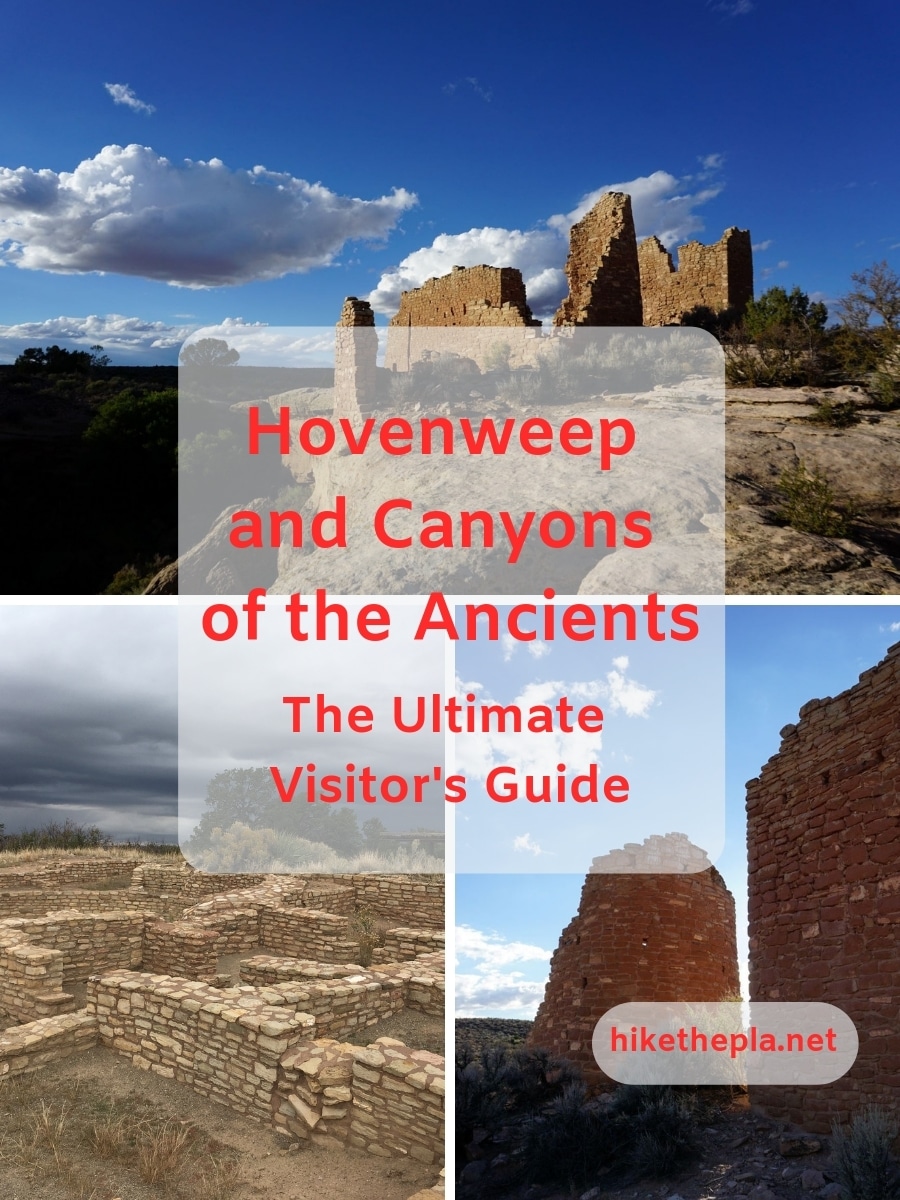
Hi Tim
Thanks for this website, really good to get to read your thoughts
D.